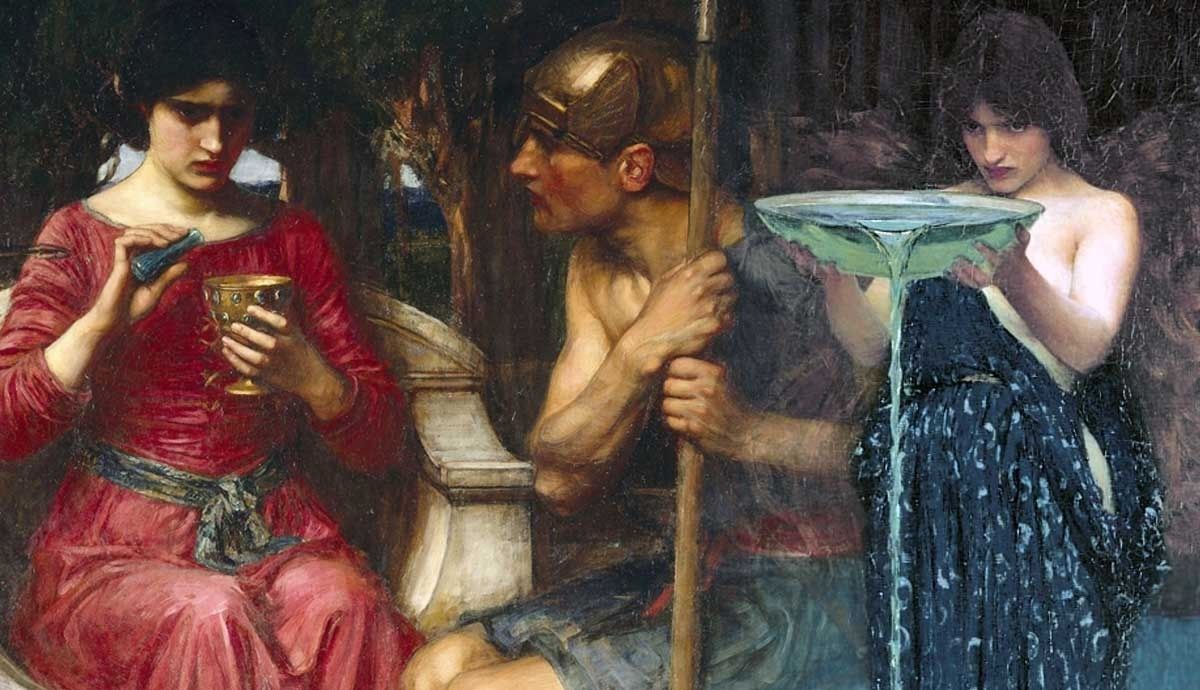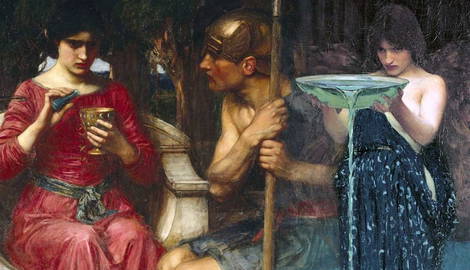
No artist brought Greek mythology to life for Victorian audiences like John William Waterhouse. Around the turn of the century, the English painter infused classical themes with the poignant beauty of the Pre-Raphaelite style. In his hands, Greek myths were not merely retold, but transformed to capture the fascinations and fears of the Victorian era.
Greek Myths Reimagined on the Victorian Canvases of John William Waterhouse

For Victorian audiences, the world of Greek mythology offered a compelling escape from the era’s industrial hardships and rigid social codes. John William Waterhouse (1849–1917), a prominent follower of the Pre-Raphaelite movement, became renowned for breathing new life into these classical myths and popular legends.
Waterhouse particularly mastered the art of chromatic expression. His characteristic palette of luminous jewel tones, along with tactile brushstrokes and attention to naturalistic details, created an evocative, dreamlike effect that bridges past and present. The following five paintings exemplify how Waterhouse revitalized five Greek myths into vivid expressions of the Victorian imagination.
1. Jason and Medea: Magic, Betrayal, and Ill-Fated Romance

According to Greek mythology, the hero Jason, leader of the Argonauts, sets out to retrieve a legendary artifact called the Golden Fleece. Through magic and cunning, the sorceress Medea aids Jason in his triumph, only to face heartbreak and betrayal, which lead her down a path of murderous vengeance.
Waterhouse depicts the ill-fated lovers at a pivotal moment of their story, as told by the ancient poet Apollonius of Rhodes. Medea, cloaked in radiant red with a look of determination, produces a magic potion for Jason to give him godlike strength for the tasks ahead. A coiled serpent looks on, a symbolic warning against fate and forbidden knowledge. Waterhouse’s Medea is agentic and morally ambiguous—an alluring alternative to Victorian social norms, which demanded passivity and purity from women.
2. Echo and Narcissus: Victorian Vanity in a Greek Tragedy

The Roman poet Ovid introduced readers to the Greek myth of Echo and Narcissus. A mountain nymph cursed to repeat the words of others, Echo falls in love with the beautiful Narcissus, who is fated to obsess over his own reflection. Narcissus’s insatiable self-absorption eventually kills him, and Echo, consumed by grief, wastes away. Only her voice remains in the physical realm, a haunting, eternal echo of others’ words.
Waterhouse’s Narcissus lies prostrate on a serene riverbank, transfixed by his reflection in the water. Echo is perched nearby, her intense longing unnoticed by Narcissus yet palpable to the viewer. Both characters are oblivious to the idyllic, tranquil setting around them, which underscores their emotional isolation and misplaced focus. Doomed to die of broken hearts, Echo and Narcissus served Victorian audiences as a cautionary tale about vanity and unrequited love.
3. Hylas and the Nymphs: The Dark Allure of Nature

Hylas, the handsome companion of Heracles, is sent to fetch water during the Argonauts’ quest for the Golden Fleece. Enchanted by water nymphs, Hylas is lured into their underwater realm, only to be drowned. This myth explores themes of innocence, temptation, and the dark forces of nature.
Viewers look down on Waterhouse’s rendition of the scene, catching colorful glimpses of what lurks beneath the deep water’s surface. The nymphs—with their luminous skin, languid figures, and soft gazes—quietly hypnotize Hylas, who is yet unaware of his fate. Victorian audiences would have recognized the femme fatale trope in the seductive yet subtly threatening water nymphs. As retold by Victorians, the myth of Hylas was a moral allegory about the dangers of unchecked desire.
4. Ulysses and the Sirens: The Song of Temptation

During his long voyage home from the Trojan War, Ulysses (the Roman name for Odysseus) faces the deadly Sirens, whose irresistible song tempts sailors to their doom. Ulysses orders his crew to plug their ears, but he has himself bound to the mast so he can safely hear the Sirens’ deadly voices. This story symbolizes the internal struggle against temptation, a preoccupation in both Homer’s Odyssey and Victorian society.
Waterhouse captures Ulysses straining against his bonds, his face charged with desire and defiance as the winged Sirens swarm him. The portrayal of the Sirens as bird-bodied—otherworldly and unusual for the time—actually aligns more closely with the original myth. The dark, turbulent sea and the encroaching cliffsides also heighten the sense of the sublime in this moment.
5. Circe Invidiosa: Jealousy and Power on a Haunted Shore

Circe, exiled to the mythological Greek island of Aeaea, is a powerful goddess-enchantress known to transform men into beasts. In one harrowing tale, Circe, driven by jealousy, crafts a poison to turn the beautiful sea nymph Scylla into a legendary man-eating monster.
Majestic and menacing in equal measure, Circe dominates Waterhouse’s elongated canvas. Her fixed, chilling stare accompanies her deliberate dip of the bowl, filled to the brim with lime-green poison, into the swirling waters below. Circe’s exposed breast highlights her seductive power, which, combined with her witchcraft, represented a growing threat to Victorian men amidst shifting attitudes toward gender and power around the turn of the century.
Like the other paintings, this striking portrayal reveals how John William Waterhouse reshaped ancient myths into vivid reflections of his era. Importantly, it also illustrates how Greek mythology continually evolves and reverberates far beyond the time and place of its origins.










